Exhibition at the Kunsthistorisches Museum in Vienna presents the world of Fabergé
Egg with model of the cruiser “Memory of Azov” (671 KB). Presented by Emperor Alexander III to his wife, Maria Feodorovna, at Easter 1891. Saint Petersburg, 1891. House of C. Fabergé, Artist: M. Perkhin. Heliotrope, aquamarine, brilliants, rose-cut diamonds, gold, ruby, platinum, silver, velvet - egg: 9,3 х 7 cm, model: h. 4 cm, l.7 cm © The Moscow Kremlin State Historical and Cultural Museum and Heritage Site
VIENNA.- As part of the Austro-Russian Cultural Season the Kunsthistorisches Museum is hosting a major exhibition that showcases both the work of Carl Fabergé, the period’s leading and most influential Russian jeweller, and the decorative arts in Imperial Russia at the turn of the 20th century.
Over 160 selected loans from the Kremlin and the Fersman Mineralogical Museum in Moscow document Fabergé’s virtuosity, and place his oeuvre in the context of contemporary Russian jewellery design. Another focus of the exhibition is the role of the Imperial family as patrons and connoisseurs.
Two of Moscow’s largest museums - the museums of the Moscow Kremlin and the Fersman Mineralogical Museum - are showing works at the Kunsthistorisches Museum for the first time. In many ways their history and organization are similar to those of the Kunsthistorisches Museum: the latter evolved from collections assembled by the Habsburgs, the former from those amassed by the Imperial Russian family. In the Imperial Russian Treasury the collection of Russian goldsmith work and jewellery from the second half of the 19th and the early 20th century forms a seminal section. These objets d’art were produced by the leading jewellery houses - C. Fabergé, P. Ovchinnikov, I. Khlebnikov, V. Semionov, or F. Köchli, to name but a few.
Additional unique works by Peter Carl Fabergé and the Imperial glyptic manufactories with which he collaborated are today in the Mineralogical Museum.
“The house of Fabergé” conjures up exceptional jewellery creations – a combination of brilliant imagination and virtuoso craftsmanship using only the choicest materials. This is particularly true for objects created for members of the Imperial Russian family after 1885, the year Fabergé received a Royal Warrant.
In 1872 Peter Carl Fabergé took over the company from his father. At the same time he began to restore historical gold and silver artefacts in the Hermitage, and to assist in the new installation of the Imperial Treasury. This careful study of historical jewellery and goldsmith work may be the reason why the family firm evolved from a jeweller to a company celebrated for their objets de fantaisie – objets d’art without any practical use – that are in many ways similar to Kunstkammer objects. In 1900, these objects cut from precious or semi-precious stones – from baroque bouquets of flowers to animal figurines inspired by Japanese netsuke – induced the jury of the Paris World Fair to proclaim that these works touch “the frontier of perfection – where jewellery turns into art”.
In addition to these artefacts, the house of Fabergé is best known for the Imperial Easter eggs that Peter Carl Fabergé and his workmasters created for the Russian Imperial family – one of the reasons why he was known as the “Cellini of the North”.
Fabergé created his first Easter egg in 1885 for the wife of Emperor Alexander III, Empress Maria Feodorovna (born Princess Dagmar of Denmark). It was inspired by an early 18th century Easter egg now in the Danish Royal collection. Two similar baroque eggs have also survived, one of them in the Kunstkammer in Vienna. These golden eggs all contain an enamelled hen in a nest made of brilliants. The hen, in turn, contains a crown that contains a ring.
Fabergé created a gold egg covered in white enamel containing a hen, a crown and a small ruby egg. Emperor Alexander III and his wife, Empress Maria Feodorovna, loved the “Jewelled Hen” egg, and each Easter they commissioned a new egg from Fabergé. So at the start of each Holy Week the owner of the house of Fabergé would present his Imperial patrons with a new egg, surprising them again and again with unusual subject-matters and his virtuosity. Following the death of Emperor Alexander III, his son and heir, Emperor Nicholas II, ordered two eggs each year: one for the Dowager-Empress, Maria Feodorovna, and one for his wife, Alexandra Feodorovna. Each egg had to be different from its predecessor, surpassing it in terms of inventiveness, composition and unusual design.
In all Fabergé created around 50 Easter eggs for the Imperial family, forty-two of which have survived. The exhibition includes four eggs: the “Memory of Azov” egg of 1891, the “Trans-Siberian Railway” egg, which contains a miniature working model of a train of the Trans-Siberian Railway (1900), the large “The Moscow Kremlin” egg, and the “Constellation” egg, which features the Tsarevich’s star sign; this was the last egg ever begun by Fabergé but events in the course of the Great War and the outbreak of the Russian Revolution in February 1917 prevented its completion. This egg featuring the star sign of the doomed Crown Prince is a poignant symbol of the fall of the House of Romanov.
In addition to the four Easter eggs by Fabergé, the exhibition showcases personal objects that belonged to members of the Russian Imperial family. Among them are precious objects for every-day use such as cigarette cases, objects to be placed on a writing desk, seals and fans. However, a particular focus of this exhibition is on a section of the decorative arts-production that flourished at this exalted level only in Russia: hardstone carving.
Thus the exhibition draws a line from the Russian to other imperial collections, especially the Kunstkammer Vienna. Hardstone carving was much admired and collected in a Kunstkammer by 16th and 17th princely connoisseurs; however, this genre retained its popularity only in Russia, and the objects produced in the Imperial-Russian manufactories at Petergof and Yekaterinburg in the 19th century were greatly admired all over the world. Peter Carl Fabergé opened his own stonecutting workshop at St. Petersburg. It produced precious vessels but also animal figures cut from semi-precious stones that were popular presents at court and in society, the choice of animal reflecting the recipient’s appearance or character. Over thirty of these small hardstone sculptures depicting animals, plants or people are on show in the exhibition; they were produced either in the Imperial stone carving workshops or by the house of Fabergé.
Another section of the show focuses on Fabergé’s enamel work, celebrated for its virtuosity, and the firm’s sumptuous jewellery. Only a handful of the latter has survived in Russia; most was broken or reworked, and many of the precious stones reset. A rare exception is the hoard of magnificent pieces of jewellery discovered by chance in the 1990s during rebuilding work in a Moscow house. We now know that they were hidden by one of the directors of the holding company C. Fabergé; this is how they survived the turmoil of the 20th century. These rare artefacts are on show in the exhibition, together with other magnificent examples of Russian goldsmith work.
The exhibition documents that Fabergé’s fame is buttressed not only by his Easter eggs but also by his wide range of fine goldsmith work, making him Russia’s leading jeweller at the turn of the 20th century. At the same time the show illustrates that the house of Fabergé was not unique, placing their products in the context of work by other, less well known but equally brilliant firms holding Royal Warrants such as Bolin, Carl Blank, P. Ovtichinnikov, or I. Khlebnikov.
This exhibition is curated by Paulus Rainer (Vienna) and Tatjana Muntian (Moscow).
Egg with model of the cruiser “Memory of Azov” (3.2 MB). Presented by Emperor Alexander III to his wife, Maria Feodorovna, at Easter 1891, Saint Petersburg, 1891. House of C. Fabergé, Artist: M. Perkhin. Heliotrope, aquamarine, brilliants, rose-cut diamonds, gold, ruby, platinum, silver, velvet - egg: 9,3 х 7 cm, model: h. 4 cm, l.7 cm © The Moscow Kremlin State Historical and Cultural Museum and Heritage Site
The Trans-Siberian Express Easter Egg with key (659 KB). Presented by Emperor Nicholas II to his wife, Alexandra Feodorovna, at Easter 1900 Saint Petersburg, 1900. House of C. Fabergé, Artist: M. Perkhin.Gold, platinum, partly-gilt silver, rose-cut diamonds, ruby, onyx, crystal glass, wood, silk, velvet, enamel on guilloché ground, filigree enamel; egg: h. 26 cm, train: l. 39,8 cm, wagon: h. 2,6 cm © The Moscow Kremlin State Historical and Cultural Museum and Heritage Site
“The Moscow Kremlin" Egg (561 KB). Presented by Emperor Nicholas II to his wife, Alexandra Feodorovna, at Easter 1906. Saint Petersburg, between 1904 and 1906. House of C. Fabergé. Gold, silver, onyx, glass, glimmer, enamel of guilloche ground, enamel paint, oil paint; h. 36,1 cm (incl. base), base: 18,5 х 18,5 cm © The Moscow Kremlin State Historical and Cultural Museum and Heritage Site
“Constellation” Egg (365 KB), Saint Petersburg, 1917. House of C. Fabergé. Rock crystal, rose-cut diamonds, glass; h. 18 cm © Fersman Mineralogical Museum
Cigarette case (1.1 MB). Presented by the Dowager-Empress Maria Feodorovna to Emperor Nicholas II at Christmas 1897, Saint Petersburg, 1897. Firm: K. Hahn, Artist: C. Blank. Gold, brilliants, rose-cut diamonds, almandine, enamel on guilloché ground; 8,5 х 5,5 cm © The Moscow Kremlin State Historical and Cultural Museum and Heritage Site
French Bulldog Figurine (1.0 MB), Saint Petersburg, late 19th / early 20th century. House of C. Fabergé. Citrine, sapphires, gold; 4 х 2 cm © The Moscow Kremlin State Historical and Cultural Museum and Heritage Site
Flower "Pansies" in Crystal Glass (728 KB). Gift from Tsar Nicholas II to his wife, Empress Alexandra Feodorovna, on their tenth wedding anniversary, Saint Petersburg, 1904. House of C. Fabergé, Artist: H. Wigström; gold, rose-cut diamonds, rock crystal, glass, ivory, bone, enamel, water colours; h. 15,5 cm © The Moscow Kremlin State Historical and Cultural Museum and Heritage Site
Cup (701 KB), Saint Petersburg, between 1899 and 1904. House of C. Fabergé, workshop: A. Nevalainen; silver, moonstones, enamel on guilloché ground, gilt; h. (with handle) 5,5 cm, 3,8 cm in diam. © The Moscow Kremlin State Historical and Cultural Museum and Heritage Site
Notebook (1.3 MB), Saint Petersburg, 1908–1917. House of C. Fabergé, Artist: H. Wigström; platinum, gold, silver, pearls, leather, paper, moiré, enamel on guilloché ground, painted enamel; 8,7 х 6 х 1 cm © The Moscow Kremlin State Historical and Cultural Museum and Heritage Site
Jar (619 KB). Crystal glass: Western Europe, late 19th / early 20th century. Setting: Moscow, between 1899 and 1908. House of C. Fabergé; cut glass, silver, ruby, sapphire, glass grinding, gilt; h. 28,5 cm © The Moscow Kremlin State Historical and Cultural Museum and Heritage Site
Kovsh (traditional drinking vessel or ladle) (689 KB), Moscow, between 1899 and 1908. House of C. Fabergé, artist: F. Rückert; silver, filigree enamel with additional painted enamel; l. 9 cm, h. (with handle) 2,6 cm © The Moscow Kremlin State Historical and Cultural Museum and Heritage Site
Kovsh (traditional drinking vessel or ladle) (794 KB), Moscow, between 1908 and 1917. House of C. Fabergé, artist: F. Rückert; silver, filligre enamel, painted enamel, amalgam, gilt; h. 11,4 cm, l. 15,5 cm © The Moscow Kremlin State Historical and Cultural Museum and Heritage Site
Pectoral Cross (706 KB), Saint Petersburg, between 1899 and 1908. House of C. Fabergé, artist: August Hollming; gold, almandines, pearls, enamel on guilloché ground, painted enamel; 13,6 х 8 cm © The Moscow Kremlin State Historical and Cultural Museum and Heritage Site
Pendant (513 KB), Moscow, early 20th century. House of C. Fabergé; silver alloy, brilliants, rose-cut diamonds, emerald; 6 x 4,8 cm © The Moscow Kremlin State Historical and Cultural Museum and Heritage Site
Brooch-pendant on a Chain (450 KB), Saint-Petersburg, early 20th century. The House of Fabergé; platinum, gold, brilliants, rose-cut diamonds, pearls; 5 х 2,7 cm (brooch-pendant), l. (chain) 47 cm © The Moscow Kremlin State Historical and Cultural Museum and Heritage Site
Brooch (431 KB), Moscow, 1899 - 1908. House of C. Fabergé; gold, silver, brilliants, rose-cut diamonds, sapphires; 2,4 х 2,4 cm © The Moscow Kremlin State Historical and Cultural Museum and Heritage Site
Brooch-pendant (690 KB), Moscow, between 1899-1908. House of C. Fabergé; gold, diamonds, rose-cut diamonds, emeralds, wood, cloth, non-precious metal; 11 х 6,7 cm © The Moscow Kremlin State Historical and Cultural Museum and Heritage Site
Brooch: Tortoise (825 KB), Saint Petersburg, third quarter of 19th century; gold, brilliants, rose-cut diamonds, sapphire; 6,7 х 4,5 cm © The Moscow Kremlin State Historical and Cultural Museum and Heritage Site
Brooch (635 KB), Russia, late 19th - early 20th century; gold, platinum, base metal, brilliants, rose-cut diamonds, emeralds, pearls; 9 х 6,5 cm © The Moscow Kremlin State Historical and Cultural Museum and Heritage Site
Brooch (362 KB), Saint Petersburg, 1908-1917; gold, silver, brilliants, rose-cut diamonds, sapphires, glass, mother-of-pearl; 6,5 х 2,7 cm (with legs) © The Moscow Kremlin State Historical and Cultural Museum and Heritage Site
Reserve Soldier (667 KB), Saint Petersburg, House of C. Fabergé, artist: P.M. Kremlev and G. Savitskij; gold, silver, jasper, ophicalcite, pegmatite; h. 17 cm © Fersman Mineralogical Museum
Geese (344 KB), Saint Petersburg, early 20th century. House of C. Fabergé; rock crystal with a gold chain, rhinestone diamonds, rubies, stone carving; h. 8 cm © Fersman Mineralogical Museum
Small Cup (342 KB), Saint Petersburg. House of C. Fabergé, artist: Mihail Perhin; moss agate, silver, stone carving, gilt; 7,5 x 6 x 6 cm © Fersman Mineralogical Museum
Pine, entwined with Wisteria (437 KB), Saint Petersburg. 1908–1917. House of C. Fabergé, artist: F. Afanasiev; gold, silver, emeralds, jade, onyx marble, noble serpentine (bowenite); h. 21,5 cm © Fersman Mineralogical Museum
Casket (1.2 MB), Saint Petersburg,1898-1903. House of C. Fabergé, artist: Yu. A. Rappopo; silver; 27 x 16.8 x 28 cm © The Moscow Kremlin State Historical and Cultural Museum and Heritage Site

/https%3A%2F%2Fprofilepics.canalblog.com%2Fprofilepics%2F1%2F0%2F100183.jpg)
/https%3A%2F%2Fstorage.canalblog.com%2F03%2F02%2F119589%2F96711876_o.jpg)
/https%3A%2F%2Fstorage.canalblog.com%2F11%2F31%2F119589%2F94773502_o.jpg)
/https%3A%2F%2Fstorage.canalblog.com%2F20%2F83%2F119589%2F94772815_o.jpg)
/https%3A%2F%2Fstorage.canalblog.com%2F26%2F72%2F119589%2F75604929_o.jpg)
/https%3A%2F%2Fstorage.canalblog.com%2F59%2F60%2F119589%2F26458628_o.jpg)

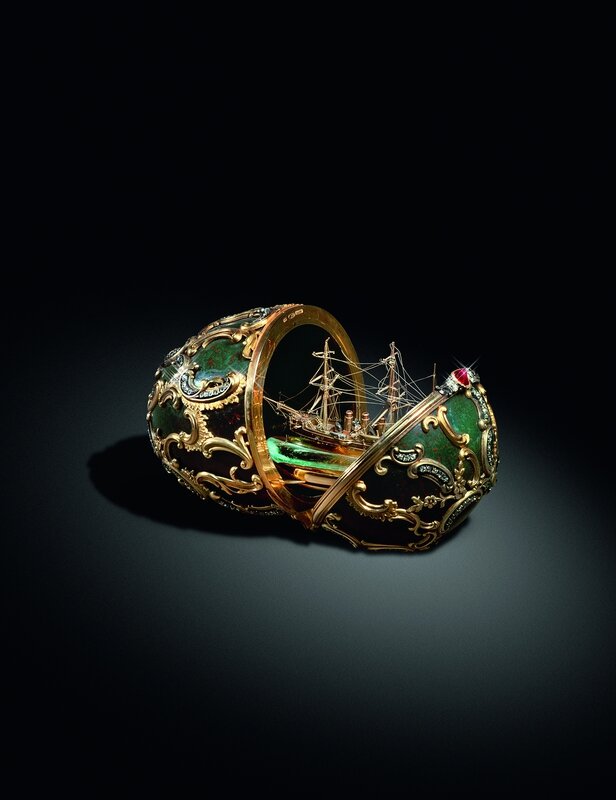


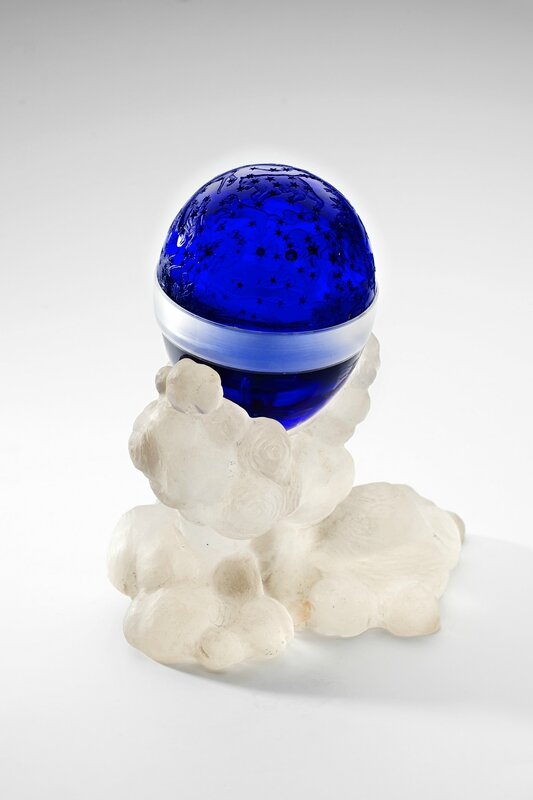
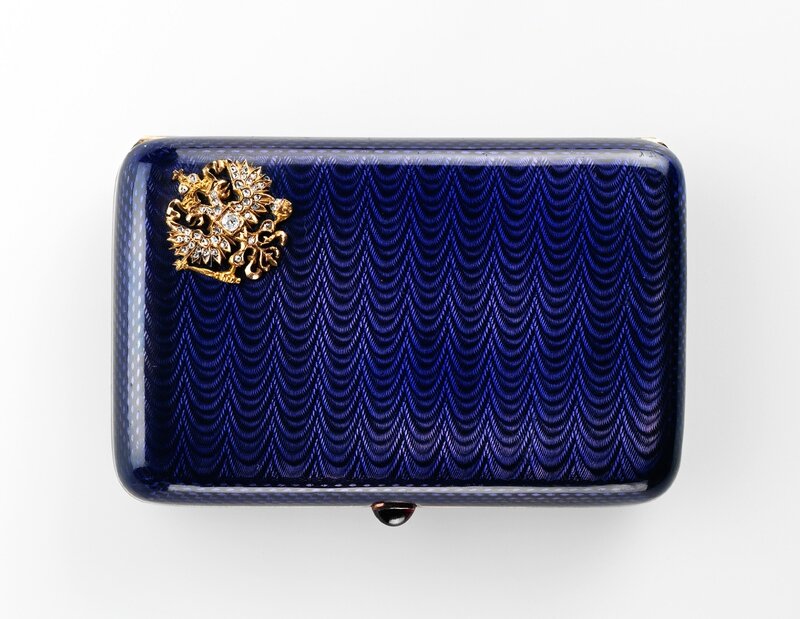




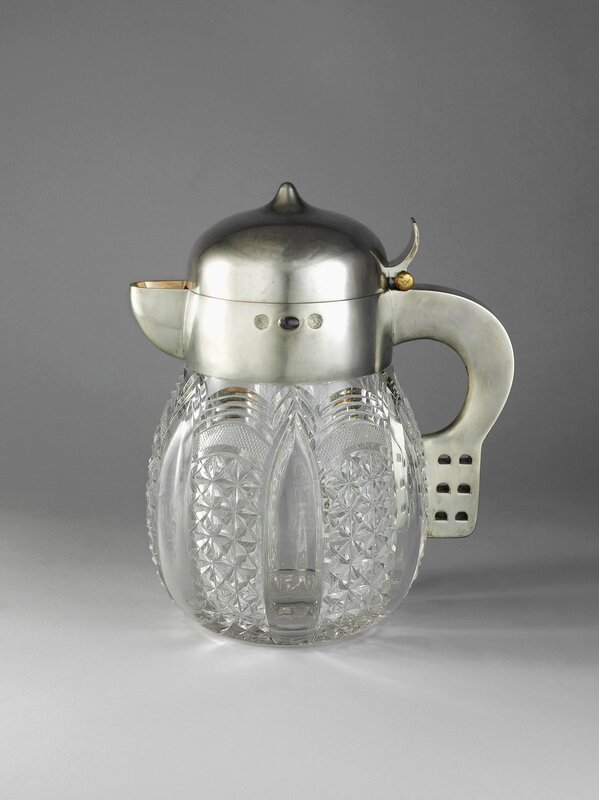











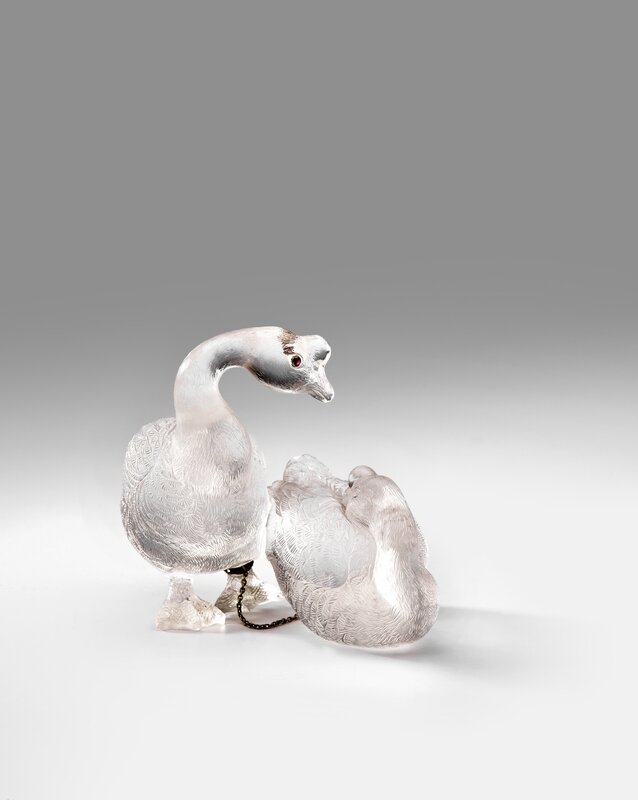

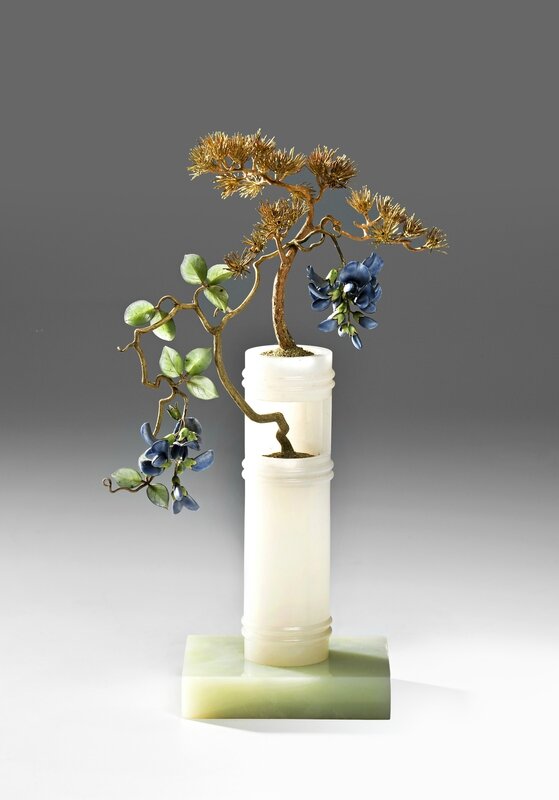



/http%3A%2F%2Fstorage.canalblog.com%2F28%2F04%2F119589%2F120497707_o.jpg)
/http%3A%2F%2Fstorage.canalblog.com%2F87%2F82%2F119589%2F120304906_o.jpg)
/http%3A%2F%2Fstorage.canalblog.com%2F87%2F61%2F119589%2F111964223_o.jpg)
/http%3A%2F%2Fstorage.canalblog.com%2F95%2F58%2F119589%2F111497696_o.jpg)